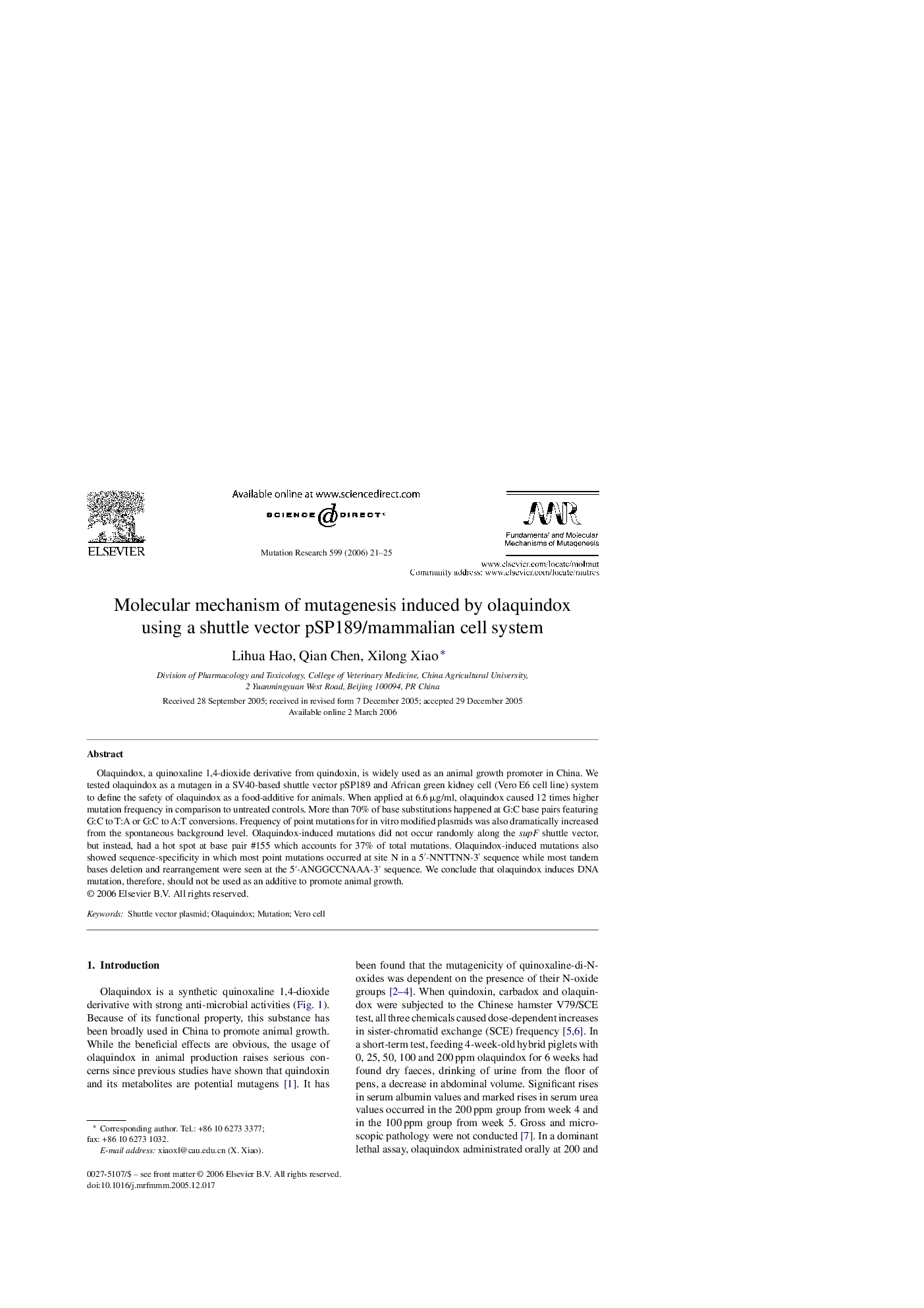| Article ID | Journal | Published Year | Pages | File Type |
|---|---|---|---|---|
| 2147586 | Mutation Research/Fundamental and Molecular Mechanisms of Mutagenesis | 2006 | 5 Pages |
Abstract
Olaquindox, a quinoxaline 1,4-dioxide derivative from quindoxin, is widely used as an animal growth promoter in China. We tested olaquindox as a mutagen in a SV40-based shuttle vector pSP189 and African green kidney cell (Vero E6 cell line) system to define the safety of olaquindox as a food-additive for animals. When applied at 6.6 μg/ml, olaquindox caused 12 times higher mutation frequency in comparison to untreated controls. More than 70% of base substitutions happened at G:C base pairs featuring G:C to T:A or G:C to A:T conversions. Frequency of point mutations for in vitro modified plasmids was also dramatically increased from the spontaneous background level. Olaquindox-induced mutations did not occur randomly along the supF shuttle vector, but instead, had a hot spot at base pair #155 which accounts for 37% of total mutations. Olaquindox-induced mutations also showed sequence-specificity in which most point mutations occurred at site N in a 5â²-NNTTNN-3â² sequence while most tandem bases deletion and rearrangement were seen at the 5â²-ANGGCCNAAA-3â² sequence. We conclude that olaquindox induces DNA mutation, therefore, should not be used as an additive to promote animal growth.
Keywords
Related Topics
Life Sciences
Biochemistry, Genetics and Molecular Biology
Cancer Research
Authors
Lihua Hao, Qian Chen, Xilong Xiao,
